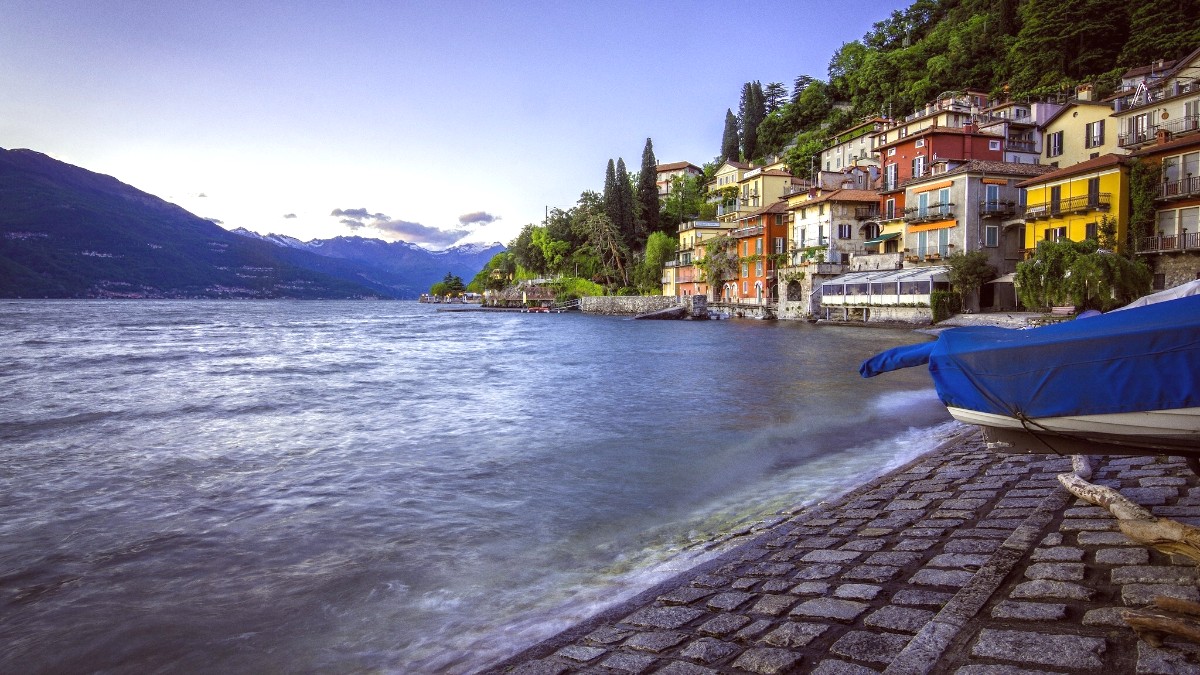
Lombardy And The Lakes, Italy
Milan (Milano): Approximately 1 hour 10 minutes to 1 hour 30 minutes by regional train. Milan is Italy's fashion and finance capital, featuring landmarks like the Duomo di Milano, Galleria Vittorio Emanuele II, and Leonardo da Vinci's "The Last Supper" (requiring advance booking).
Piacenza: A charming city in the Emilia-Romagna region, just 20-30 minutes by regional train. Piacenza's historic center has Piazza Cavalli, its Duomo, and several palaces, offering a delightful taste of Emilian life. Brescia: About 40-50 minutes by regional train, with UNESCO World Heritage sites including Roman ruins and a Lombard monastic complex. Parma: Around 1 hour by regional train, famous for Parmigiano Reggiano cheese and Prosciutto di Parma. Lake Garda (e.g., Sirmione): Reaching Lake Garda typically takes around 1.5 to 2 hours by train and bus, known for its Scaliger Castle and Roman ruins.
While Cremona sits in a flat plain, the surrounding region offers opportunities for gentle natural escapes focused on river landscapes and agricultural areas.
Parco Regionale Adda Sud, Parco Regionale Oglio Sud are regional parks along the Adda and Oglio Rivers. These riverine environments are protected, with opportunities for walking, cycling, and birdwatching. They are places for peaceful reflection.
Cremona is inland, so no direct beaches or mountains are present. The surrounding area is mainly rural and agricultural. Charming villages offer a taste of authentic Lombard countryside life.
Beyond the well-known cities, the region around Cremona features smaller historical and cultural sites for exploration.
Castello di Soncino: Approximately 30 kilometers (19 miles) north of Cremona, this well-preserved medieval castle offers a fascinating glimpse into the region's past. Certosa di Pavia: About 70 kilometers (43 miles) northwest of Cremona, this stunning monastic complex is a masterpiece of Renaissance and Gothic architecture. It is reachable by train to Pavia and then a local bus or taxi.
Crema: A charming town with a beautiful Duomo and Piazza del Duomo, offering a taste of local life slightly off the main tourist trail. Soncino: Besides its castle, the village itself is quaint and worth exploring. Agriturismos: Many farm stays offer food tastings, farm-to-table meals, and sometimes accommodations, providing a direct experience of the region's agricultural bounty.
Sanctuary of Santa Maria della Croce: Near Crema, this is an important Marian sanctuary, known for its unique circular architecture.
Beyond Cremona's main square, numerous smaller architectural gems are present, demonstrating the region's historical evolution. Look for specific palazzi and ancient civic buildings in unexpected corners of the towns.
The broader Cremonese territory features local museums and collections that offer more detailed insights into specific historical periods or artistic movements.
Cremona serves as a stepping stone for longer regional travels, connecting to other iconic Italian destinations.
An additional 2-3 days can be spent exploring the stunning Italian Lakes. Lake Garda, Lake Como, or Lake Iseo feature picturesque towns, boat trips, and mountain scenery. Reach is possible by train from Milan or Brescia.
Spend 2-3 days immersed in the culinary heartland of Emilia-Romagna, focusing on cities like Parma and Modena for Parmigiano Reggiano, balsamic vinegar, and prosciutto tastings.
While a bit further, a 2-3 day extension is possible for visiting Verona (known for its arena and Romeo & Juliet connections) and the unique canal city of Venice. These are easily accessible by train from Milan or Brescia.
Milan often functions as a major hub for onward travel, with high-speed train connections to other Italian cities and international flights. Bologna is an university town, offering direct high-speed train connections to Florence, Rome, and Venice.
These routes provide an overview of exploring the wider Lombardy and Emilia-Romagna regions, using Cremona as part of a larger journey.
Start in Milan (fashion/culture), then head to Bergamo (historic upper town), Lake Como (scenic beauty), Brescia (history/castles), Cremona (violins/food), and finally Pavia (Certosa/university town).
Begin in Cremona (violins/Mostarda), move to Parma (Parmigiano/Prosciutto), then Modena (balsamic vinegar/Ferrari), Bologna (food capital/university), and possibly Ferrara (Renaissance city).
Focus on Lake Garda, Lake Como, and Lake Maggiore, taking in picturesque lakeside towns and villas. This route is often combined with Milan.